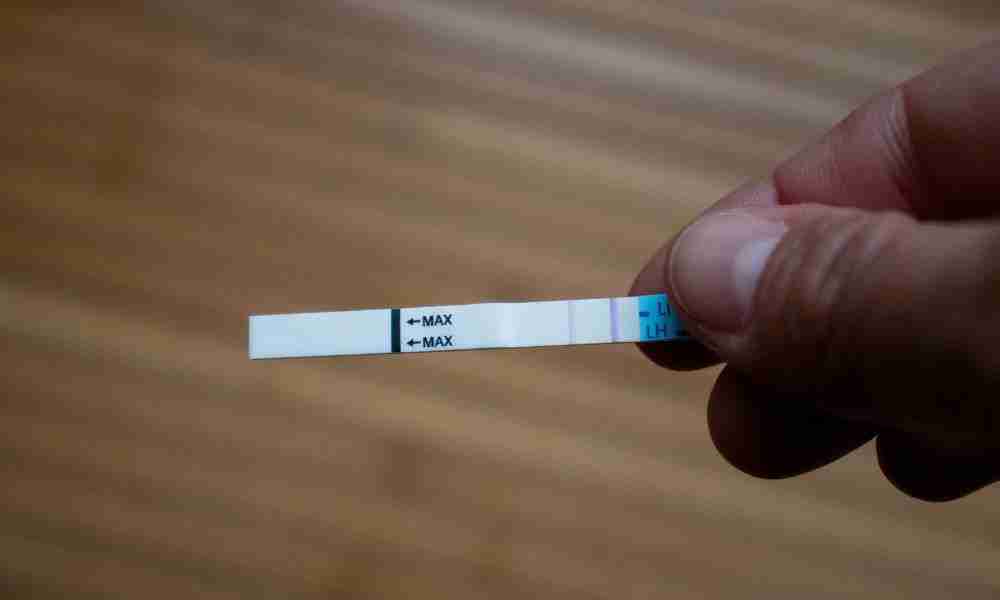
he LH test recognises ovulation based on the hormone increase, which can be practical for women who want to have children. We explain why you still shouldn't use the LH test for contraception.
LH, the luteinising hormone, is one of the hormones responsible for the female cycle are necessary. In addition to other functions, LH is also responsible for triggering ovulation. Women who want to have children in particular use LH tests, also known as ovulation tests, to make sure they don't miss the point at which they can become pregnant. Here you can find out why LH tests are still not a safe contraceptive.
What are LH tests?
The idea behind the LH test is that you can recognise ovulation by monitoring your LH levels. The eggs mature in the first half of the cycle. During ovulation, the follicle bursts and the egg inside can be fertilised. Ovulation is triggered by a high level of LH, which is why this hormone is used as a parameter to determine ovulation. After all, LH levels should rise before ovulation in order to trigger it. This can be helpful if you want to get pregnant and want to know when you are fertile.
How an LH test works
The LH value is usually measured in urine, especially if you do the test at home, this is the simplest option. Of course, laboratories and doctors' surgeries also carry out hormone tests, but they often take blood samples to determine the hormone concentration.
LH tests for home use work in a similar way to Pregnancy tests. You pee on a test strip on which lines appear. A positive result means that your LH level has risen and you should ovulate soon.
It is important for the LH tests that you know which phase of your cycle you are currently in. This is because you should always check the value at approximately the same time and under the same conditions several days before ovulation in order to recognise the increase. You can track your cycle with our femSense App and find out which phase of your cycle you are currently in. However, even with consistent Cycle tracking with the femSense app contraception with the LH test because ovulation cannot be recognised with complete reliability.
Why an LH test is not always reliable
Unfortunately, LH tests are not always completely accurate and reliable; various factors can influence the result. For example, the LH concentration in morning urine is higher than during the rest of the day. On the other hand, the hormone concentration decreases when you drink a lot.
The extent to which the LH value increases varies from woman to woman, which is why the increase may not even be noticed in less sensitive tests and tests that are too sensitive are read as falsely positive.
Scientists have discovered that some women have several LH surges in one cycle. This means that ovulation cannot be linked to one surge. The test would detect an LH surge several times and recognise ovulation even though only one occurs per cycle.
According to one study, the LH peak is on average 1.2 days before ovulation. In a quarter of the cycles analysed, the time between the LH peak and ovulation was longer than two days.
The LH tests can therefore provide a rough guide as to when ovulation takes place, but they cannot confirm it with certainty and therefore do not reliably protect against pregnancy!
Why femSense can tell you more reliably that ovulation has taken place
femSense does not recognise ovulation based on the LH concentration, but uses the temperature method. Our wafer-thin Sensor patches have an integrated temperature sensor and continuously measure your body temperature once they have been applied to your skin.
After ovulation, the body releases the hormone progesterone. Among other things, progesterone ensures that the temperature rises by 0.2-0.5°C. Our patches recognise this increase: femSense reports when ovulation has actually taken place - according to internal studies, with a probability of around 93%.

The temperature method is therefore safer than checking the LH value, because there is a very high probability of a Ovulation If an LH test result is positive, the only certainty is that the LH level is elevated and the body is preparing for ovulation. However, this can also be a kind of "false alarm" and the body will try again at a later time.
Because the LH test and femSense measure different factors to recognise ovulation, slightly different results can sometimes be displayed. This is because it makes a difference whether a run-up to ovulation or the rise in temperature after ovulation is measured.
Would you like to try out our cycle tracker? You can download the femSense app here free of charge and track your cycle. Our ultra-thin sensor patches are available here. Let yourself be convinced by our sensor patches, which only report ovulation when it has actually taken place!
Sources:
Luteinising Hormone (LH) Levels Test (2023)
Ellis(2023), Luteinising Hormone (LH) Levels Test
Wedler (2023), Ovulation test
Sator (2023), Ovulation
Direiro et al (2023), Relationships between the luteinising hormone surge and other characteristics






Leave a Reply